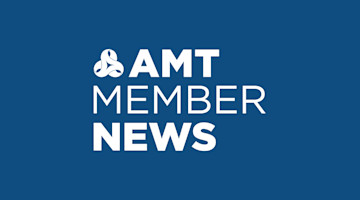Sales and marketing activities, like so many other things, have faced new challenges since the pandemic. Many, if not all, sales and marketing activities have moved to digital platforms; digital lead generation, email marketing, and social media communications have become more critical than ever; and virtual meetings and conferences have replaced online events.
“Digital marketing and communications in the B2B industries have been in play for many years, and now, more sales activities are moving into the digital arena as well. Traveling and personal sales meetings have decreased in the past nine months due to the pandemic, and companies are shifting budget from sales visits to online marketing, social media, and online demos,” said Jeff Radichel, principal, The Next Step.
AMT News marketing columns have covered social media communications and email marketing, most recently in the March/April and May/June 2020 issues, and our recommendations in these areas continue to apply. In this column, we will provide some tips on developing and hosting a successful online product demo.
An online demo is a virtual, real-time demonstration of a product or service. They typically refer to the demonstration of a physical piece of machinery or a software application as opposed to a pre-recorded presentation featuring still images, graphs, and charts, which is typically considered a webinar.
A strong demo and script should grab your audience’s attention right away by clearly communicating what they care about and creating strong visuals through a quality video presentation.
The ideal place to host a demo is directly from your office because you have the home-court advantage. You can use the presentation tools that you’re comfortable with, prevent distractions, and control the overall tone of the demo and presentation.
To prepare the demo, start with an outline of your main points and then develop the script. Include a brief company and personal introduction, a general overview of what will be covered in the demo, an introduction to the product and its features, a demonstration of the product in either real time or pre-recorded video, a discussion of benefits, presentation of use cases, and an opportunity for the customer to ask questions at the end.
The presentation should ideally be no longer than an hour, with 15 minutes set aside for Q&A. Do not pack too much technical information into the demo and script itself; the customer can review specs and details afterward. Each section should carry equal weight, be precise, and be easy to follow and understand. A good rule of thumb is to focus on no more than the top three to five features and benefits. Research has shown that people typically only remember three to five main points, so if you include too many, you cannot be sure they remember the most important ones!
It is important to practice and rehearse several times before your first live demo. Have your notes available (and large enough to easily read) just in case you need to refer to them, but do not directly read your script during the demo. It comes off as unprepared and unprofessional. Practice your script until you’re comfortable with it and you can easily make your presentation in a conversational tone.
Make sure that your demo and script is customized to each prospect’s business needs and processes and include data and use cases that directly relate to their challenges. Presentations that are too generic will not keep your prospect engaged. Each prospect fundamentally cares only about their business problems and what your company’s products can do to help solve those problems.
Because each prospect will be slightly different in terms of their preferred learning style – some may respond more to graphs; others to technical data, diagrams, or still images – it is ideal to highlight your most important points in several different formats.
Be prepared for questions and have your answers prepared in advance. Certain questions may be relatively obvious; other questions that you may not have considered will come up as you continue to present to prospects. Keep a list of these questions so you are always prepared to respond to them.
One of the best ways to make your demo relevant to your audience is to include use cases of customers with similar challenges who successfully used your product. These customers often also serve as references. In your use cases, start with an overview of the specific pain points your customer was facing and give specific details of how your product solved those issues.
Technical considerations
Make sure you use a high-quality, easy-to-use video conferencing application. Technical issues in the middle of a presentation are one of the most common ways demos go wrong or appear unprofessional. It not only looks bad for you and your company, but it has the potential to derail the entire presentation.
Last but not least, test your video conferencing application before the start of the demo. Sometimes, issues are outside your control, like a bad internet connection, so have a backup plan in place. Make sure the lighting is optimal, the background is not distracting, and there is no background noise.
For a closer look at how demos can elevate your messages and products, sign into IMTS spark today. The live demos are sure to inspire your creative juices.






